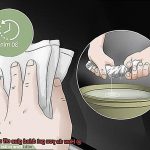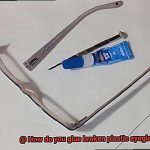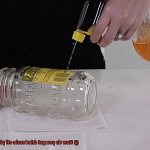Are you struggling to remove stubborn epoxy from your beloved wooden furniture or floors? Epoxy resin is a go-to coating for wood, providing long-lasting durability and protection. But let’s face it, once it has hardened on the surface, it can be a real pain in the neck to get rid of. Epoxy resin is often used in high-traffic areas or those exposed to water frequently, which means it can become discolored or damaged over time. That’s why knowing how to remove hard epoxy off wood is essential.
Getting hard epoxy off wood may seem like an intimidating task, but fear not. There are several methods you can use to remove epoxy resin from your wooden surfaces. Each method will depend on the type of epoxy used, its age, and the severity of the damage. In this blog post, we’ll explore some of the most common techniques for removing hard epoxy off wood and help you find the best approach that suits your specific needs.
First things first: safety and preparation are crucial before starting any epoxy removal process. We’ll walk you through important safety measures and introduce various products and tools that can assist in successfully getting rid of stubborn epoxy. Most importantly, we’ll cover different techniques for removing hard epoxy off wood such as heating, mechanical removal, and chemical solvents.
By the end of this blog post, you’ll have a better understanding of how to remove hard epoxy resin from wood like a pro. With our tips and tricks at hand, you’ll be equipped with all the knowledge necessary to tackle this job with confidence and ease. So let’s get started.
What is Epoxy?
Contents
Epoxy is an incredibly versatile two-part adhesive system that is widely used in construction, woodworking, and other industries. This adhesive consists of a resin and a hardener that, when mixed together, undergoes a chemical reaction that results in a strong and durable bond.
One of the main benefits of epoxy is its ability to bond strongly to a wide variety of surfaces, including wood, metal, concrete, and plastic. It is also highly resistant to water, heat, and chemicals, making it an ideal choice for many applications. Epoxy can be used for bonding, filling, and coating applications. Additionally, it can be colored or tinted to match the surrounding material.
However, removing hardened epoxy from wood can sometimes pose a challenge for many professionals. When epoxy hardens on a wooden surface, it can be tough to remove without causing damage. To get the job done properly, follow these tips:
- Soften the epoxy first: One way to soften hardened epoxy is by using heat or a chemical solvent. Heat guns or hairdryers can be used for this purpose. Chemical solvents like acetone, rubbing alcohol, or paint thinner are also effective.
- Use a putty knife or scraper: Once the epoxy has been softened, it’s time to scrape it off the wood surface using a putty knife or scraper. However, caution must be taken not to apply too much pressure as this can damage the wood surface.
- Remove any remaining traces with sandpaper: If there are any remaining traces of hardened epoxy on the surface, sandpaper can be used to gently remove them.
It’s essential to remove hardened epoxy from wood surfaces carefully to avoid causing any damage. To ensure that you get the job done correctly without any complications, angle your scraper at 45 degrees to the surface of the wood.
What are the Benefits of Using Epoxy?
Look no further than epoxy. It is a popular choice across various industries due to its numerous benefits that set it apart from other adhesives.
One of the most significant advantages of using epoxy is its exceptional bonding strength. It can bond to almost any surface, including wood, metal, concrete, and plastic, making it the go-to choice for construction, woodworking, and automotive repair projects. Additionally, its resistance to water, chemicals, and heat is unmatched, which means it can maintain its bonding strength even in the harshest environments.
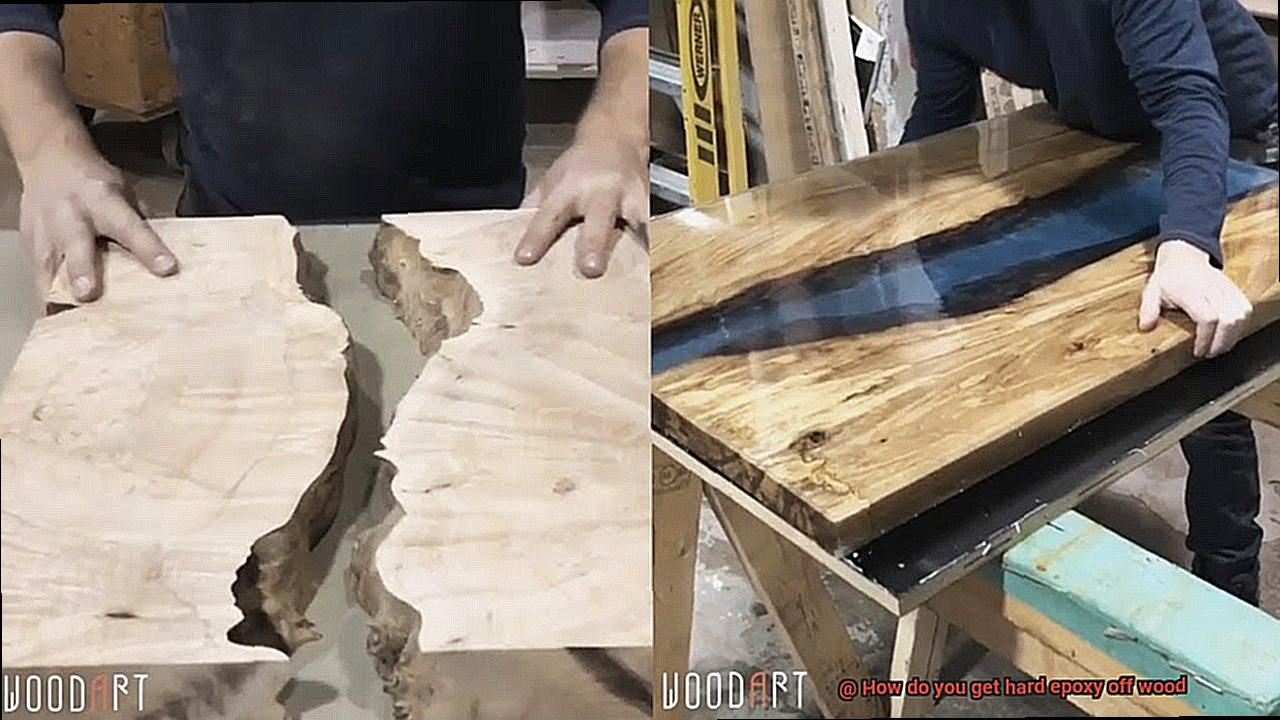
But that’s not all – epoxy is also highly durable. It can withstand heavy loads and impact without cracking or breaking, making it a reliable choice for projects that require long-lasting strength. Once the epoxy has cured, it can be sanded or painted over to achieve a smooth and professional finish.
Epoxy is also incredibly versatile. It can be used for a variety of purposes such as filling gaps and cracks, repairing damaged surfaces, and creating a level finish. Plus, it’s easy to apply, so anyone can use it – whether you’re a seasoned professional or a beginner DIYer.
What are the Challenges of Removing Hardened Epoxy from Wood?
Removing hardened epoxy from wood is no easy feat. The strong adhesive properties of epoxy make it a formidable opponent, particularly once it has hardened and bonded with the surface of the wood. As an expert in this field, I can tell you that there are several challenges you may encounter when attempting to remove hardened epoxy from wood.
The first challenge is that the longer the epoxy has been on the wood, the harder it becomes to remove. With time, the epoxy penetrates deep into the pores of the wood, making it more resistant to scraping or sanding. Therefore, it is crucial to act fast and remove the epoxy as soon as possible.
Another challenge is temperature sensitivity. Epoxy becomes brittle in cold temperatures and soft in warm temperatures. This means that you need to pay attention to the temperature when attempting to remove it from wood. If you try to remove it in warm temperatures, it will be more challenging to scrape off.
Lastly, removing hardened epoxy from wood can also cause damage to the surface of the wood. Scraping or sanding can remove a layer of the wood’s surface, leaving behind an uneven or rough surface. Moreover, excessive force during removal can cause cracks or splits in the wood.
To overcome these challenges, you need proper techniques and tools for removing hardened epoxy from wood. Here are some tips:
Start by using a heat gun or hairdryer to soften the epoxy before scraping or sanding.
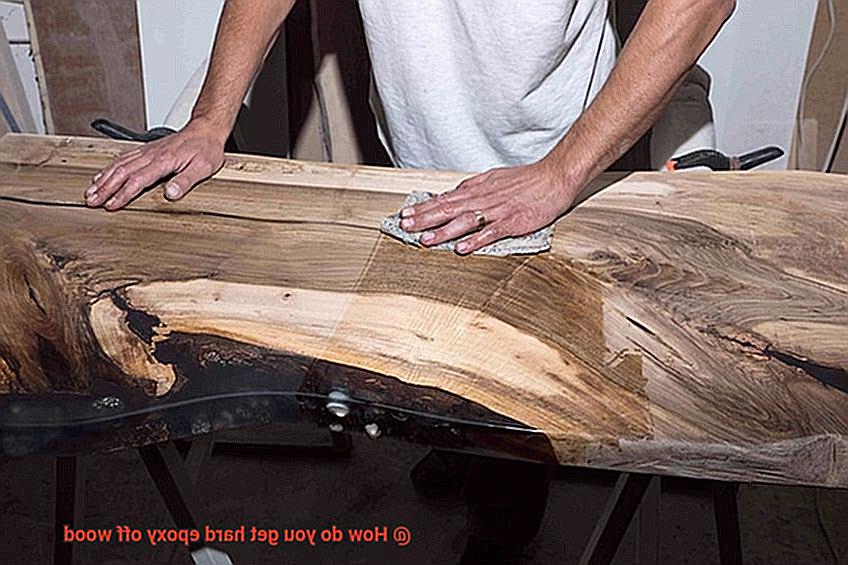
Use a razor blade or scraper to scrape off as much of the epoxy as possible.
Sand the remaining epoxy with sandpaper until it is smooth.
Apply a fresh coat of finish to restore the appearance of the wood.
Step 1: Softening the Epoxy
Removing hardened epoxy from wood can be a daunting task, but with the right techniques, it can be done. The first step in this process is to soften the epoxy. There are several methods to achieve this, and here are some of the most effective ones:
Firstly, using heat is a great way to soften epoxy, especially for smaller areas. A heat gun or hairdryer can be used to apply heat to the epoxy for a few seconds until it becomes soft and pliable. Then, remove the epoxy gently using a scraper or putty knife. It is important to note that this method should only be used on small areas of epoxy, as too much heat can damage the wood surface.
Secondly, solvents such as acetone or denatured alcohol can also be used to soften epoxy. Simply soak a cloth in the solvent and place it over the hardened epoxy for several hours. Over time, the solvent will penetrate the epoxy and soften it, making it easier to remove. Always wear protective gear and test a small area before attempting to remove large amounts of epoxy.
Finally, mechanical methods such as sanding or grinding can be used to soften epoxy by breaking it down. However, this method should be used with caution as it can damage the underlying wood surface.
It is important to wear protective gear such as gloves and eye protection when working with solvents or using mechanical methods to remove epoxy. Additionally, always test a small area first before attempting to remove large amounts of epoxy to ensure that the process does not damage the wood surface.
Step 2: Scraping Off the Epoxy
Don’t worry because scraping off the epoxy is the solution you need. Although it requires some effort and patience, it’s a highly effective method that can save your wood from further damage.
To get started, you’ll need a few tools: a scraper or chisel with a sharp edge, putty knife or razor blade, heat gun or hairdryer, and a respirator or mask. Make sure to have sharp tools to avoid damaging the wood surface while scraping off the epoxy.
Hold your scraper at a 45-degree angle and apply pressure on the epoxy surface. Start by gently scraping off small sections of the epoxy. It’s crucial to take your time and avoid rushing through the process to prevent mistakes and damage to the wood surface.
If the epoxy is too hard to remove, don’t worry; there’s a solution for that too. Use a heat gun or hairdryer to blow hot air over the epoxy surface for a few minutes before gently scraping it off.
It’s essential to wear protective gear such as a respirator or mask throughout the process. Inhaling dust particles from the epoxy can be harmful to your health.
But what if you encounter stubborn areas where the epoxy is difficult to remove? No worries, you can use a chemical epoxy remover. Apply the remover on the affected area, let it sit for a few minutes, and then scrape off the softened epoxy.
Step 3: Sanding Off Any Remaining Residue
You’ve successfully removed that stubborn epoxy from your wooden surface. But wait, there’s one more crucial step you need to take to ensure that your wood looks as good as new. That’s right, we’re talking about Step 3: Sanding off any remaining residue.
Sanding is a significant step in the process of removing hard epoxy from wood. It ensures that all traces of the epoxy are removed from the surface of the wood, leaving behind a smooth and polished finish. To begin, use a coarse grit sandpaper to remove as much of the epoxy as possible. Start with a low grit sandpaper (around 80 grit) and gradually work your way up to a higher grit (around 220-320 grit) for a flawless finish.
Sanding can be a time-consuming process, especially if there are large areas covered in epoxy. In such cases, using an electric sander can speed up the process and ensure an even finish.
Safety is also essential when sanding. Make sure to wear protective gear such as goggles and a dust mask to avoid inhaling any harmful particles or debris. Additionally, remove all dust and debris from the surface before proceeding with any further steps such as staining or sealing the wood.
In some cases, sanding may not completely remove all traces of the epoxy, especially if it has hardened over time. In such situations, use a chemical solvent specifically designed for removing hardened epoxy. However, it’s crucial to follow all safety protocols and instructions carefully when using such solvents.
Tips for Successfully Removing Hardened Epoxy from Wood
Removing hardened epoxy from wood can be a daunting task, but with the right tools and techniques, it can be done successfully. Here are five sub-sections that will guide you through the process of removing hardened epoxy from wood without damaging the surface.
Softening the epoxy:
The first step in removing hardened epoxy from wood is to soften it. You can achieve this by using heat or a chemical solvent. Heat can be applied using a heat gun or a hairdryer. Be careful not to overheat the wood, as this can cause damage. Chemical solvents like acetone, rubbing alcohol, or paint thinner can also be used to soften the epoxy. Apply the solvent to the hardened epoxy and let it sit for several minutes before attempting to remove it.
Scraping the epoxy away:
Once the epoxy has been softened, use a scraper or putty knife to gently scrape it away. Be sure to use a sharp edge and avoid applying too much pressure to prevent damaging the wood surface. Work slowly and carefully until all the epoxy has been removed.
Sanding the surface:
If there are any remaining traces of hardened epoxy on the wood surface, sandpaper can be used to remove them. Start with a coarse grit sandpaper and gradually work your way up to a fine grit sandpaper until the surface is smooth and free of epoxy. Remember to sand in the direction of the grain to avoid damaging the wood surface.
Prevention is key:
To avoid having to remove hardened epoxy from wood in the future, it’s important to take preventative measures. Always follow the manufacturer’s instructions when applying epoxy to ensure proper application and curing. Additionally, protect your work surface with a drop cloth or other covering to prevent any accidental drips or spills from adhering to the wood surface.
Protect yourself:
When removing hardened epoxy from wood, be sure to wear protective gloves and eyewear to avoid skin and eye irritation. It’s also important to work in a well-ventilated area to avoid inhaling any fumes.
u3Ls495fwkQ” >
Conclusion
In conclusion, removing hard epoxy from wood may seem daunting, but with the right techniques and tools, it can be accomplished successfully. Softening the epoxy using heat or chemical solvents is the first step before delicately scraping it away with a sharp-edged scraper or putty knife. The surface should then be sanded with coarse grit sandpaper followed by fine grit sandpaper to ensure all traces of epoxy are removed.
Prevention is key to avoiding future removals of hardened epoxy from wood. Always adhere to the manufacturer’s instructions when applying epoxy and protect your work surface with a drop cloth or other covering to prevent any accidental drips or spills from sticking to the wood surface.
It’s crucial to wear protective gear such as gloves and eyewear when removing hardened epoxy from wood and work in a well-ventilated area to avoid inhaling any fumes.


